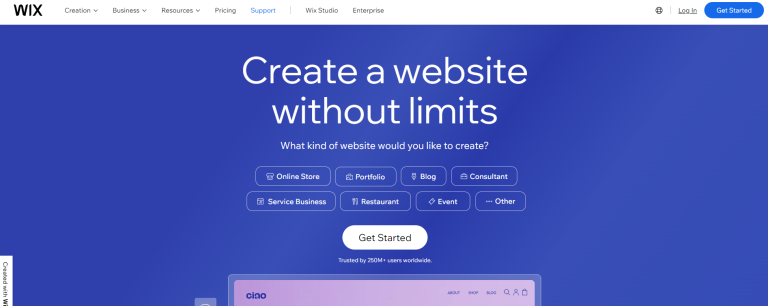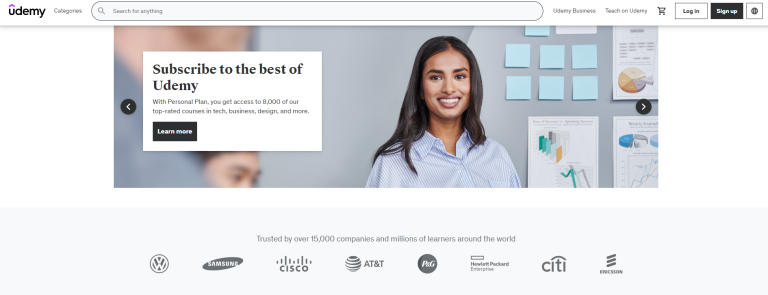Online Course Platform Comparison Guide

So you want to create and sell an online course. That’s a fantastic decision. I think it’s one of the best ways to package your expertise, share what you know, and build a real business around your skills.
But right out of the gate, you hit the first major hurdle: choosing the right platform. When you start comparing online course platforms, you’ll quickly find yourself staring at two very different paths.
One path offers convenience where everything is handled for you. The other offers total control, but demands more technical work from you.
How To Choose Your First Online Course Platform
I’ve been there. Staring at a dozen different tabs, trying to figure out what features really matter. It’s easy to get completely overwhelmed. Picking a platform feels like a huge, irreversible decision because, in a way, it is. You’re choosing a business partner, not just buying software.
I wrote this guide to cut through that noise.
To make the right call, you need to get clear on a few things about your situation before you even glance at a pricing page.
What Really Matters in Your Decision
Let’s simplify this. Your choice boils down to two main options:
- All-in-one platforms: Think of services like Kajabi or Teachable. They handle it all, from video hosting and payment processing to website builders and marketing tools. They’re built for convenience, plain and simple.
- WordPress plugins: Tools like LearnDash add powerful course functionality to a WordPress website that you build and manage yourself. This route gives you maximum control and customization.
There is no single “best” platform. The only thing that matters is which one is best for you, right now.
“The right platform is the one that lets you focus on creating great content and connecting with your students, not fighting with technology. Your goal is to launch, and you don’t need to become a professional web developer overnight to do it.” -Jason Webber
And the timing couldn’t be better. The market for online learning is exploding. Valued at about $12.5 billion in 2024, the Massive Open Online Course (MOOC) market is projected to rocket to nearly $112 billion by 2031.
This is a fundamental shift in how people acquire new skills. You can explore more about these trends and see what’s driving this incredible growth.
Key Factors to Consider
Before you dive into a head-to-head online course platform comparison, you need to answer three critical questions about your own circumstances. Your answers here will point you directly to the right category of tools.
| Factor to Consider | All-in-One Platform (e.g., Kajabi, Teachable) | WordPress Plugin (e.g., LearnDash) |
|---|---|---|
| Your Budget | Higher monthly fees, but costs are predictable and include hosting, video, and other essentials. | Lower upfront plugin cost, but you pay separately for hosting, themes, security, and other plugins. Costs can be less predictable. |
| Tech Comfort Level | Perfect for beginners. You don’t need to touch code or worry about server management. Just build your course and sell. | You need to be comfortable managing a WordPress site, which includes handling updates, security, and potential troubleshooting. |
| Marketing Plan | Often comes with built-in tools for email marketing, sales funnels, and landing pages to help you sell your course. | You’re in charge of integrating your own marketing tools. This gives you more choice but also means more things to set up and manage. |
Getting clear on these three points, your budget, tech skills, and marketing approach, will make the rest of this guide so much easier to navigate. It allows you to filter out the platforms that aren’t a good fit and focus only on the ones that will actually help you succeed.
A Head-to-Head Comparison of the Top Platforms
Alright, let’s get into the main event. It’s time to put three of the biggest names in the online course world, Teachable, Kajabi, and Thinkific, right next to each other for a real-world comparison.
I’m not just going to rattle off a list of features you could find on their pricing pages. My goal is to give you my honest take on what it actually feels like to build, manage, and sell a course on each one. This is all about the hands-on experience.
We’re going to dig into what truly sets them apart, from their course builders and payment processing to their community features and customization. It’s often the small details in the day-to-day workflow that make the biggest difference for you and your students.
At-a-Glance Comparison of Teachable, Kajabi, and Thinkific
Before we get into the nitty-gritty details, here’s a quick table to help you see the key differences at a glance. Think of this as your cheat sheet for understanding where each platform shines.
| Feature | Teachable | Kajabi | Thinkific |
|---|---|---|---|
| Ideal For | Beginners, speed-to-market | Established creators, all-in-one business | Course creators needing deep customization |
| Best Feature | Unmatched simplicity and ease of use | Fully integrated marketing & sales tools | Flexible site builder & student experience |
| Pricing Model | Free plan, paid plans with transaction fees on lower tiers | Premium all-in-one pricing, no free plan | Robust free plan, 0% transaction fees on all paid plans |
| Transaction Fees | 10% on Free, 5% on Basic, 0% on Pro+ | 0% (Stripe/PayPal fees apply) | 0% on all plans (Stripe/PayPal fees apply) |
| Marketing Tools | Basic email, affiliates, coupons | Advanced email, funnels, CRM, affiliates | Basic email, affiliates, coupons |
| Community | Basic comments and integrations | Integrated community & coaching products | Advanced, dedicated community spaces |
This table gives you a solid starting point, but the real decision comes down to how these features align with your specific goals. Now, let’s look at what it’s like to use each one.
Teachable: A Focus on Simplicity and Speed
Teachable’s main appeal has always been its simplicity. If you want to get a course idea out of your head and into the world as fast as possible, this platform is built for you. It masterfully removes the technical hurdles that often slow down new creators.
The course builder is refreshingly straightforward. You organize your content into sections and lectures, then upload your videos, PDFs, and text. It just works, without a bunch of confusing options to distract you.
This simplicity, however, comes with a trade-off. Your customization options for sales pages and the course player are more limited than its competitors. You can change colors and logos, but you won’t be building a completely unique-looking site from scratch within Teachable.
Key Takeaway: Teachable is fantastic for first-time creators who value ease of use and speed. It helps you validate your idea and get to market quickly.
One of the biggest factors to weigh with Teachable is its pricing, specifically the transaction fees on its lower-tier plans.
- Free Plan: $1 + 10% transaction fee per sale.
- Basic Plan: 5% transaction fee per sale.
- Pro & Business Plans: 0% transaction fee.
Those fees can really add up, so it’s a critical number to factor into your sales projections.
Kajabi: The All-in-One Powerhouse
Kajabi is a completely different beast. It’s an all-in-one solution for your entire online business, not just a course platform.
With Kajabi, you get:
- A powerful website and landing page builder.
- Built-in email marketing and automation (Email Campaigns).
- A sales funnel builder (Pipelines).
- Your own affiliate program management.
- Podcast hosting and delivery.
- Coaching products with integrated scheduling.
This deep integration is Kajabi’s greatest strength. You don’t have to duct-tape a half-dozen different tools together. Everything works seamlessly right out of the box. For example, you can build a pipeline that captures an email on a landing page, sends a follow-up sequence, and enrolls them in a course, all inside Kajabi.
The clean interface reflects a user-first design philosophy, which is a common thread among these top-tier platforms.
This all-in-one power, unsurprisingly, comes with a higher price tag. Kajabi is one of the more expensive options, but the argument is that it replaces several other subscriptions you’d be paying for anyway, like your email service provider and funnel builder.
Thinkific: The Customization Champion
Thinkific strikes a fantastic balance between Teachable’s ease of use and Kajabi’s power. It carves out its own niche with a deep focus on customization and the student experience. If you want a learning environment that truly feels like your brand, Thinkific gives you the tools.
Its Site Builder is far more flexible than Teachable’s, letting you add and rearrange a wide variety of pre-built sections to your pages. This gives you much more control over the look and feel of your course website without needing to touch a line of code.
Thinkific also excels at helping you create a rich learning journey for your students. You can build highly engaging courses with features like:
- Live Lessons: Integrate directly with Zoom for live classes or coaching.
- Communities: Create dedicated spaces for discussion, separate from the lessons.
- Assignments: Let students submit work for your review and feedback.
- Advanced Quizzing: More robust options for creating assessments.
While these platforms are incredible, it’s worth remembering they aren’t the only game in town. Marketplaces serve a different purpose, and for those exploring all avenues, you might be interested in our guide on top Udemy alternatives for course creators.
Thinkific’s pricing is also a huge draw, especially for beginners. It offers a generous free plan to build and sell your first course with no time limits. Most importantly, all of Thinkific’s paid plans come with 0% transaction fees, a massive advantage over Teachable’s entry-level plans.
Comparing Advanced Features for Scaling Your Business
That feeling when you launch your first course is incredible. It’s a huge milestone, but it’s also just the starting line. Once students start rolling in and your ambitions grow, you’ll find yourself needing more powerful tools. These are the kinds of features that help a small course grow into a real business.
This is where we go beyond the basics. We’re looking at the heavy-duty features that help you sell more, keep students hooked, and run a much smoother operation. Things like sales funnels, affiliate programs, and deep integrations might not be on your radar day one, but they become absolutely essential as you scale. Picking a platform that already has these capabilities can save you a world of headaches down the road.
Powerful Marketing and Sales Tools
Once your course is live, your job shifts from creator to marketer. Some platforms are built for this reality, while others leave you to figure it out on your own. Let’s look at the tools that can make a massive difference to your bottom line.
- Sales Funnels: A platform like Kajabi truly shines here with its “Pipelines” feature. It lets you build multi-step funnels that guide potential customers from a landing page, through an email sequence, and to a checkout page, all without ever leaving the platform. Thinkific and Teachable are less self-contained and often require you to piece together a similar setup with third-party tools.
- Affiliate Programs: Letting others promote your course for a commission is one of the single best ways to scale sales. All three of the big players (Teachable, Kajabi, Thinkific) have built-in affiliate management. However, Kajabi’s system is generally the most comprehensive, giving you far more detailed tracking and management options for your partners.
- Order Bumps & Upsells: These are the slick checkout features that can dramatically boost your revenue. An order bump is a small, related offer at checkout. A one-click upsell is a larger offer presented right after the initial purchase. Kajabi and Thinkific both handle these natively and effectively. Teachable has historically lagged in this area.
The appetite for digital learning is massive and growing fast. In 2023, the online course app market generated $3.1 billion in revenue, a 14.8% jump from the previous year (in large part due to COVID).
This growth was fueled by over 125 million people using these apps, underscoring the incredible potential for monetization. You can dig into the numbers in the full analysis of the online courses app market.
Advanced Student Engagement and Course Delivery
Getting students to enroll is only half the battle. Keeping them engaged is what builds a reputation. A passive, boring learning experience leads to low completion rates and zero word-of-mouth marketing. Here’s how platforms handle features that create a truly rich student journey.
A platform with strong community and assessment features turns a passive video course into an active learning experience. This is crucial for getting students the results they paid for, which in turn fuels your business’s reputation and growth. -Jason Webber
Thinkific, for example, places a huge emphasis on the student experience. It has a robust, dedicated Community feature that lets you build discussion spaces that feel like a private social network, completely separate from the course player. Kajabi also has a fantastic integrated Community product. Teachable’s tools are more basic and are mostly limited to simple comment threads under each lesson.
Another key area is quizzing and certifications. While every platform offers basic multiple-choice quizzes, Thinkific and LearnDash (for WordPress) go much further with advanced options like assignments that students can actually upload for your review.
Honestly, I consider This a non-negotiable if you’re teaching a skill that requires hands-on practice and personalized feedback.
Critical Integrations for a Smooth Operation
I always say that no single platform does everything perfectly. That’s why integrations are so important. This is all about how well your course platform “talks” to the other software you rely on, like your email marketing service, your CRM, or your analytics tools.
WordPress-based solutions like LearnDash is the undisputed champions of flexibility. It plays nicely with tools like Zapier and offers a huge library of native integrations, allowing you to connect to almost any tool you can imagine.
Kajabi, on the other hand, is an all-in-one system by design. It has fewer native integrations because it wants you to use its own built-in tools for email, landing pages, and more. This is a massive strength if you love its ecosystem, but it becomes a frustrating limitation if you’re already committed to another tool, like using ConvertKit for your email marketing.
Ultimately, your earning potential is tied to how effectively you can market your course and deliver a transformative experience. For a dose of reality on what that can look like, our article on how much Udemy instructors can make offers some great context on income expectations.
Choosing a platform with the right advanced features is an investment in your future. It’s about looking past your first launch and picking a partner that won’t hold you back when your business really starts to gain momentum.
How to Understand Pricing Plans and Hidden Fees

Alright, let’s talk about the money.
Platform websites can feel intentionally tricky with their layered pricing tiers, transaction fees, and a long list of optional add-ons.
My goal here is to cut through that noise for you. We’re going to walk through the common pricing structures you’ll run into. We won’t just look at the monthly subscription number, but also at the sneaky fees that can quietly take a huge bite out of your revenue.
Decoding Transaction Fees
The single most important concept to get your head around is the transaction fee. This is a percentage of every single sale the platform takes for itself. It is layered on top of the standard payment processing fees everyone pays.
For example, a platform might offer a free plan that looks amazing, right up until you spot the 10% transaction fee in the fine print. If you sell a course for $100, the platform immediately skims $10 right off the top. This doesn’t even touch the separate fee from Stripe or PayPal, which is usually around 2.9% + 30 cents.
On that one $100 sale, you could lose nearly $13 before the money ever comes close to your bank account. That adds up incredibly quickly.
When a platform advertises a plan with 0% transaction fees, it simply means they aren’t taking an extra cut. You will always have to pay the standard processing fee to Stripe or PayPal. This is a non-negotiable part of selling anything online.
So, when does it make sense to upgrade to a pricier monthly plan just to escape these fees? It’s a straightforward math problem. Figure out your expected sales volume.
If the total transaction fees you’d pay on a cheaper plan are more than the cost of upgrading to a 0% fee plan, it’s time to move up.
The True Cost of “Free” and Basic Plans
Free plans are fantastic for getting started. They let you test a course idea without any upfront financial risk, and platforms like Thinkific offer a genuinely generous free plan to build out your first course. But you have to understand the trade-offs.
Beyond the transaction fees, these starter plans often limit you in other critical ways:
- Limited Courses: You might only be able to publish one or two courses.
- Fewer Students: Some platforms will cap the number of students you can enroll.
- Forced Branding: You’ll almost certainly have the platform’s branding on your pages.
- No Custom Domain: You’ll be stuck using a subdomain like
mycourse.teachable.cominstead of your own.
These plans are a great launchpad, not a long-term home for a growing business. They’re specifically designed to get you in the door and then encourage an upgrade as soon as you start seeing real success.
Uncovering the Hidden Costs
The monthly subscription and transaction fees are the obvious costs. But there are other potential expenses you need to budget for that aren’t always splashed across the pricing page. It’s these “hidden” costs that often catch new creators by surprise.
Let’s break down a few of the most common ones.
1. Video Hosting
All-in-one platforms like Kajabi and Teachable include unlimited video hosting in their subscriptions. This is a massive, often overlooked benefit.
If you choose a WordPress-based solution like LearnDash, however, you’re on the hook for your own video hosting. Using a service like Vimeo or Wistia can easily add another $20 to $100 per month to your operational costs.
2. Premium Themes and Plugins
While platforms provide basic themes, you might want a more professional or unique look for your school. This could mean buying a premium theme, which is often a one-time cost of $50 to $200. Similarly, you might need to buy third-party plugins or integrations to add specific features, which can be monthly or annual expenses.
3. Email Marketing Services
Kajabi is an outlier here, as it includes a powerful, built-in email marketing system. Most other platforms have very basic email functions. This means you’ll need to integrate a dedicated service like ConvertKit or Mailchimp. This is another monthly fee that can start around $29 and scale up as your email list grows.
Getting your pricing right from the start is crucial, which is why we created a guide on the smart way to price your online course for maximum profits.
Which Course Platform Is Right for You?

We’ve just torn down a lot of features, pricing tables, and marketing tools. But honestly, a good online course platform comparison should help you find the one that fits your specific situation like a glove. It’s not about just picking the one with the longest feature list.
I’m going to repeat myself for the third time: there really is no single “best” platform. The best one is the one that’s right for what you’re trying to build right now. So, let’s shift from a dry feature breakdown to real-life scenarios.
See if you can spot yourself in one of these creator profiles.
The Brand New Creator Testing an Idea
You’re at the very beginning. You’ve got a fantastic course idea buzzing in your head, but you’re not 100% sure people will open their wallets for it. With a tight budget, your main goal is to validate the concept without a risky financial commitment.
You need low cost and speed to market. You need to get your course built and out there fast, without getting tangled up in technical weeds.
- Best Bet: Thinkific’s Free Plan. It’s incredibly generous. You can build your entire first course, sign up unlimited students, and you won’t pay a single transaction fee to the platform itself. It’s the perfect, no-risk runway to test your idea.
- Why it works: You get professional-grade course delivery tools without a monthly bill breathing down your neck. This lets you put all your energy into creating great content and landing those crucial first sales.
The Coach or Consultant Adding a Course
You’re a coach, consultant, or service provider with an established business. Now, you want to add a course to your lineup to scale your income and serve more people. You might also need to sell one-on-one coaching sessions right alongside a group program.
Your main priority is a flexible platform that can juggle different types of products and play nicely with your scheduling tools.
- Best Bet: Thinkific or Kajabi. Thinkific is a strong choice for its ability to host live lessons with Zoom and create dedicated community spaces. Kajabi really shines with its integrated coaching product that handles everything, including scheduling, notes, and payments, all in one place.
- Why it works: Both platforms allow you to sell various digital products under one roof. This creates a smooth, professional experience for your clients, whether they’re buying a self-paced course or a high-ticket coaching package.
The real win here is finding a platform that lets you manage multiple revenue streams without making your business operations more complicated. It should simplify your work, not add to it.
This leap from one-on-one services to one-to-many courses is a huge part of the e-learning industry’s explosive growth.
The global e-learning market was valued at $165 billion back in 2014 and is projected to hit $325 billion by 2025. With some forecasts even suggesting it will reach $1 trillion by 2028, adding a course is a very smart move. You can discover more about these impressive e-learning statistics and see the scale of the opportunity.
The Established Creator Going All-In
You’re past the validation stage. You’re making consistent sales from your courses and you’re ready to build a more serious, integrated digital business. You’re just plain tired of duct-taping different tools together for your email list, sales funnels, and website.
You need an all-in-one system that acts as the command center for your entire marketing and delivery machine. Efficiency is everything.
- Best Bet: Kajabi. This is precisely who Kajabi was built for. It’s designed to replace your email service provider, your landing page software, and even your website builder.
- Why it works: The price tag is higher, but the value is in the seamless integration. You can build sophisticated marketing automations and sales funnels (what they call Pipelines) that are simply impossible on other platforms without a ton of technical workarounds and third-party tools.
The Control Freak and Customization Expert
You have a crystal-clear vision for your brand and the student experience you want to create. You’re comfortable with technology, and you absolutely hate being boxed in by a platform’s built-in templates. You want total control over every single pixel.
Your top priority is maximum flexibility and customization.
- Best Bet: A WordPress setup using a plugin like LearnDash. This combination gives you ultimate freedom. You can pick from thousands of themes and plugins to build a truly unique site that functions exactly the way you want.
- Why it works: You aren’t locked into any single platform’s ecosystem. You own and control your data, your design, and all your integrations. It’s definitely more work to set up and maintain, but the trade-off is unlimited potential to build a completely custom learning environment.
Frequently Asked Questions About Course Platforms
After digging through dozens of options, you’re bound to have some lingering thoughts.
I’ve pulled together the most common questions I hear from creators just like you, with the straight-talk answers you need to move forward confidently.
Should I Use a WordPress Plugin or a Standalone Platform?
This is the classic fork in the road for anyone starting out. On one side, you have WordPress plugins like LearnDash, which offer total control.
You can tweak every pixel, integrate any tool you want, and build a truly bespoke learning experience. The catch? You’re the one responsible for everything, from hosting and security to updates and troubleshooting when things inevitably break. It’s a fantastic route if you’re tech-savvy and want to get your hands dirty.
On the other side, you have standalone platforms like Teachable or Kajabi. They handle all the technical headaches so you can just focus on your content. It’s a straightforward trade-off. You give up some control in exchange for a massive amount of convenience.
“For most beginners, I recommend starting with a standalone platform. This lets you put your energy into creating a great course, not into becoming a part-time web developer.” -Jason Webber
What’s More Important: Features or Ease of Use?
For the vast majority of creators, ease of use wins every single time.
It’s incredibly easy to get mesmerized by a long list of shiny features on a pricing page. But here’s the reality, if the platform is confusing or a pain to navigate, you’ll never actually use those advanced features anyway.
A simple, intuitive platform that lets you build and launch without constant frustration is far more valuable. You can always integrate other tools for more complex functions down the road.
Find a solid foundation that you actually enjoy logging into. If you dread using the tool, you won’t be motivated to build, and building is what really matters.
How Much Will I Really Pay in Transaction Fees?
This is where you absolutely have to read the fine print, because the details vary wildly between platforms. Some, like Teachable on its free plan, will take a noticeable percentage of every sale you make.
Others, including Thinkific and Kajabi, proudly advertise 0% transaction fees on their paid plans.
But here’s the crucial detail most people miss: “0% transaction fees” does not mean your sales are completely free. You will always, always pay a standard processing fee to a payment gateway like Stripe or PayPal. This is typically around 2.9% + 30 cents per transaction.
The platform’s fee is an additional charge on top of that standard processing fee. So, when a platform says they have a 0% fee, it means they aren’t taking an extra slice of your revenue. This can save you a huge amount of money as your sales grow and is a critical factor to weigh in any platform comparison.






